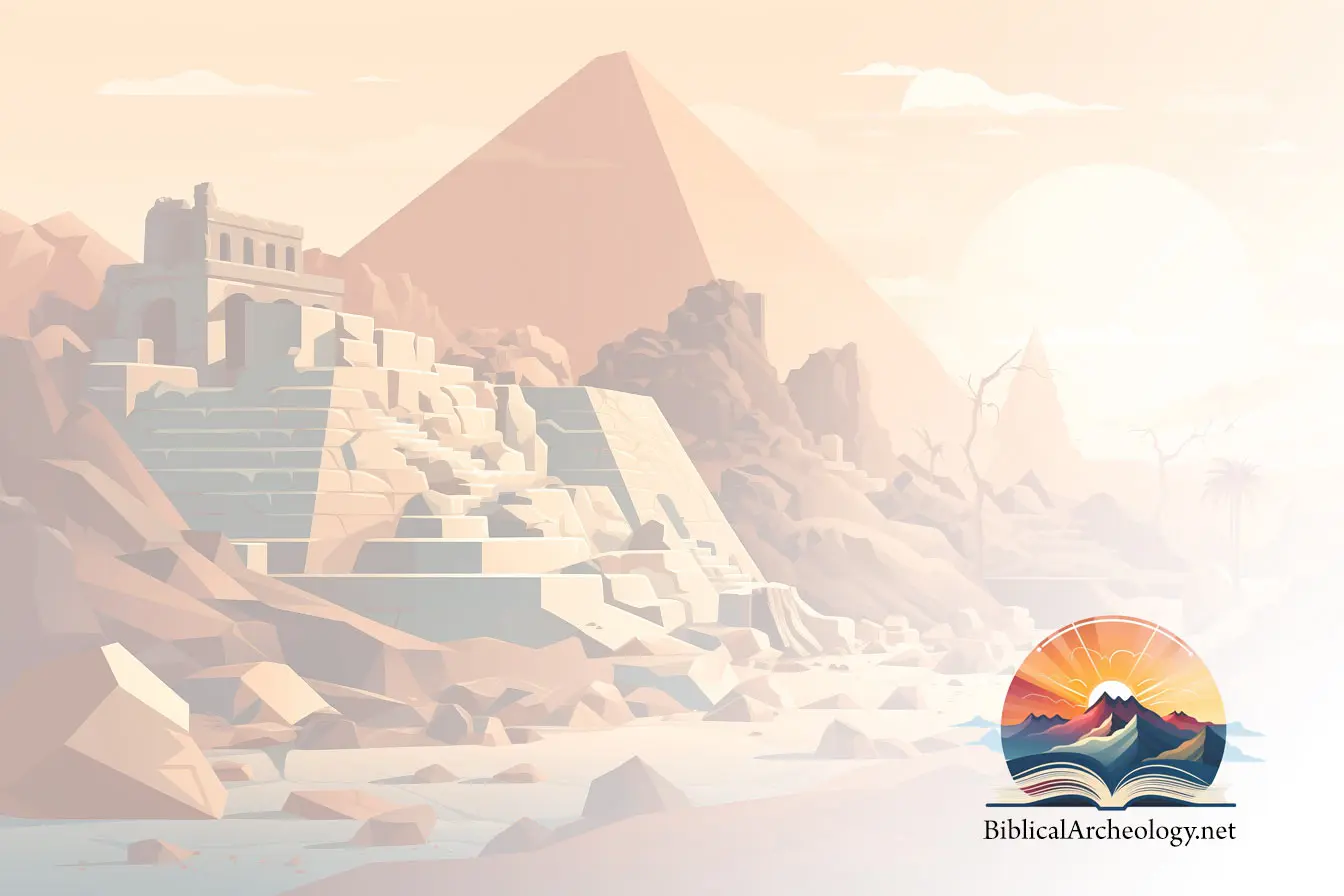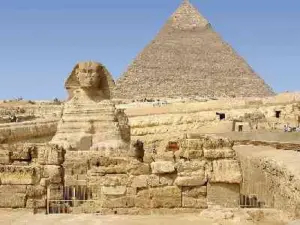The Development Of Archeology
Archeology is the science that studies the past with the help of tangible materials from past civilizations that can be discovered today. Though the systematized form of this science is less than 200 years old, it was long in making through activities that were not exactly meant to develop this branch of science. It would be interesting to examine how it all came to be throughout fits and starts.
According to the records available today, the earliest archeological activity took place between 1550 to 1070 BC when the Pharaohs of Egypt excavated the “Sphinx” that dated to the period of 2575 to 2134 [Old Kingdom]. Sphinx is a massive stylized lion reclining statue, with the Pharaoh’s face clearly discernible on it. Based upon the the marks left by climate, tools, and humans, and also based upon the ivory carvings [from the older period] discovered in its vicinity, it has become clear that such a reconstruction was done. By the later period [1550 to 1070 BC, New Kingdom], the Sphinx was buried in sand to such a level that only its head and shoulders were visible. The restoration in the New Kingdom brought it back to its earlier glory, and it continues to attract and amaze people even in this third millennium AD.
Picture: A Close-up Of The Sphinx
The information about restoration of Sphinx comes mainly through deductions, and not through written documents. The earliest available written document about archeological excavation is related to Nabonidus, the last ruler of Babylon, who ruled between 555 to 539 BC. He caused the excavation of foundation stones of a building that was dedicated to Naram-Sin, who lived more than 1700 years before his time. However, he did not continue with any substantial excavation, as archeology was not yet a science, or even an object of study.
People kept on excavating, but not for science but for other reasons. The chief motivation was either to destroy [such as the religion monuments of others] or to plunder, or simple human curiosity. For example, many dug into Pompeii and Herculaneum which were destroyed by overflowing lava. But since their aim was to look for riches, they only destroyed much that would be valuable for a scientific study. Finally Charles of Bourbon [king of Two Sicilies and founder of the House of Bourbon] employed Marcello Venuti to study Herculaneum. This was to be a formal investigation, and from 1738 onwards Venuti employed a large number of people for a systematic excavation. The artifacts and inscriptions thus discovered were studied in some detail. Archeology was not yet an established science, so the study was quite preliminary, but the systematic way in which it was done opened one door to the birth of objective archeology.
The 17th and 18th centuries were a time of affluence for many, and it helped them to devote their spare time to the pursuit of knowledge or fulfillment. A large number of sciences were born at this time, and Archeology also benefited by this attitude, though the birth of this science had to wait for a post-enlightenment era. One of the men touched by the spirit of Enlightenment was Thomas Jefferson in USA. In 1784 he conducted many excavations in Virginia. But this did not result in much general awareness or growth, because a large number of social science during that period were based more upon speculation and less upon hard data from the field. The speculations were in turn based upon the Eurocentric biases and prejudices of the thinkers, according which the Europeans represented the highest stage in the presumed ameba-to-man evolution. So ingrained was this assumption that for European thinkers [who dominated all learning at that time] and their blind or ignorant followers were more interested in speculations and theories than in facts.
It was more like “do not confuse me with facts”. Theory dominated every area of thinking, and everything had to be subjugated to the pet theories. Speculation was enough to know truth, and nobody had to go out there to find it inscribed in stone. Thus not much work was done to develop Archeology beyond speculation. However, by the time the so-called period of “enlightenment” was over, the empirical method started gaining in prominence. This in turn helped archeology enormously.
The Nineteenth Century: The 1700s was a time when wealthy Europeans acquired uncountable antiques, a good proportion of which eventually ended up one way other in European museums. There was no system of classification, and there was no way to correlate these finds which were detached from the place of find without any objective and methodical records. By this time the growth of the empirical sciences was enough for Museum Curators to realize that the haphazard way in which these artifacts are collected and piled in museums is only destroying evidences related to antiquity.
Photograph: The Sphinx Against Its Backgound
Christian Jurgensen Thomson was one of the first to try to bring some kind of an order to all this. He was the curator of the National Museum of Denmark, so had sufficient know-how to do something. He therefore picked up the ideas of the historian Videl-Simonson and developed a method of classification. This was a great step in the development and progress of archeology. Thommson’s successor as curator, JAA Worsaae, picked up these ideas and eventually established them as true with the help of scientifically conducted digs. The evolutionary ideas of Charles Lyell and charles Darwin also influenced pioneers of archeology in 1800s. The evolutionary progression was supposed to seen even in cultural development, and this gave further impetus to discovery and systems of classification. However, since this science was still in infancy, many notable individuals kept working independently, coming up uneven result, some even leading to disaster as far as archeology is concerned.
Jacques Boucher de Perthes: Many began investigating archeological objects post-enlightenment, and one of them was Jacques Boucher de Perthes. He was a French and a customs officer. During 1830 to 1850 he discovered a large collection of bones of now-extinct animals, hand axes and many artifacts. These were found at the site of Abbeville along the Somme River in France, and were considered “ice age” deposits according to the then prevailing chronology. He gave wide publicity to his discovery of proofs for a prehistoric society. The scholarly world ignored his claims for 12 years, and then only two British “archeologists” visited the site. There they found elephant bones and stone axes situated in the site, and the published a write-up supporting de Perthes’ claims.
Botta, Layard, And Others: During the 1840s, Paul Emile Botta, an Italian, excavated the Palace of Sargon II of Assyria. However, he did so under the mistaken impression that he was digging the biblical site of Nineveh mention in the book of Jonah. Thus he could not contribute anything substantial though he had a good find on his hands.
Sir Austen Henry Layard, an Englishman, was soon challenged by the work of Botta. A few years after the work of Botta he searched and did finally find Nineveh. He did much work, though he had to face unusual hardships. This work did extend the knowledge of archeology, though archeology as a science was still in infancy, depending upon crude methods. Yet a few important steps were taken for the development of archeology.
Another step was advanced by Christian J. Thomsen and Jens Jacob Asmussen Worsaae. They were curators, one after another, of the National Museum of Denmark. Both of them argued against the then prevailing theory about the use of metals in antiquity. According the they that prevailed at their time, a theory shaped more by human prejudice, and less by hard facts of discover, iron tools were used by poor people whereas bronze tools were used by the rich, simultaneously. They argued that the type of metal had to do more with the age there were discovered than with the financial statues of the users. Their investigations in 1840 brought forth empirical proof, and thus the idea of a three-age system [stone age, iron age, and bronze age] was strengthened. This was another step in the growth of archeology.
During the 1870s Heinrich Schliemann, a German, spent time at a site in Turkey known as Hisarlik. He was obsessed with a desire to find Troy of the Odyssey and the Iliad, and spent four years at this site. In these four years he came across nine levels of occupation, an archeologist’s delight, but ignored it all due to his obsessive mind.
Move Towards Objectivity: By 1860 there was increased awareness that Archeology is no longer to be left merely in the hands of the curious or the status-seekers. An increasing number of men began to address the issues objectively and in a scholarly manner. Peer-review became more common. In the next 40 years the five basic tenets of archeology were recognized widely:
-
For the sake of maximum accuracy excavation should be done stratigraphically, as ancient civilizations have tended to build layer upon layer.
-
The small and seemingly insignificant items have their own important story to tell, so they should never be ignored or discarded.
-
Extensive field notes, photographs, and maps that record excavation progress should be kept.
-
The results should be published for others to know, assess, and critique.
-
Archeological work needs the cooperation of large teams and even government forces, and the legal system and property rights of the native country should always be respected.
The Italian archeologist Guiseppe Fiorelli played a key role in the application of the above concepts. The German archeologist Ernst Curtisus also played a similar role. Of these, Fiorelli’s school for archeological methods became one of the fist institutions to offer formal training to Italians and others in the science of archeological digging.
Finally three men, Schliemann, Pitt-Rivers, and Petrie brought maturity and rigor to the methods of archeology. Heinrich Schliemann was initially quite haphazard in his work, but his assistant Wilhelm Dorpfeld [who already had experience of working on Olympia] convinced him of the need for rigor. This in turn led Schliemann to make many refinements to his technique, and he began to keep careful records of his excavations, took all finds [small or big] into consideration, and promptly published his finds.
Henry Lane-Fox Pitt-Rivers was a man from military background. Thus he brought military precision and rigor to his archeological work. He eventually spent a fortune to build a collection of artifacts and many other items, mainly for comparative studies. William Matthew Flinders Petrie came to the field when archeology was close to maturing into an objective science. He helped this development further. He perfected the science and art of sequence dating, and introduced high standards for excavation. He used to plan his excavations in meticulous detail, and insisted upon the same culture among archeologists. He did extensive excavations, proposed several theories, and published extensively.
The Twentieth Century: The 20th century has been a time for explosive growth for all fields of scientific study. Increasing number of Universities worldwide began offering full range of courses in archeology. Many of them began sending teams of students for guided digs. Hundreds of amateur and professional archeological societies came up worldwide. Hundreds of popular and technical magazines came up, catering to every level of scholarship [and ignorance].
Meanwhile, the increasing trend towards interdisciplinary studies, and the use of tools perfected by others, spread to archeology also. Various techniques of dating, specially Radio Carbon Dating, were increasingly pressed into service. Microscopic and spectroscopic studies were integrated with Archeology. Insights gained from forensic laboratories worldwide were applied to Archeology also.
Today Archeology stands as an objective science, helping man to discover an increasing amount of information about his past. Since over half of the Bible is history, 2000 to 6000 years old, Archeological discoveries and insights have helped Bible students in unusual breadth as well as depth. A discussion of this topic will be taken up in the history of the development of Bible And Archeology.



